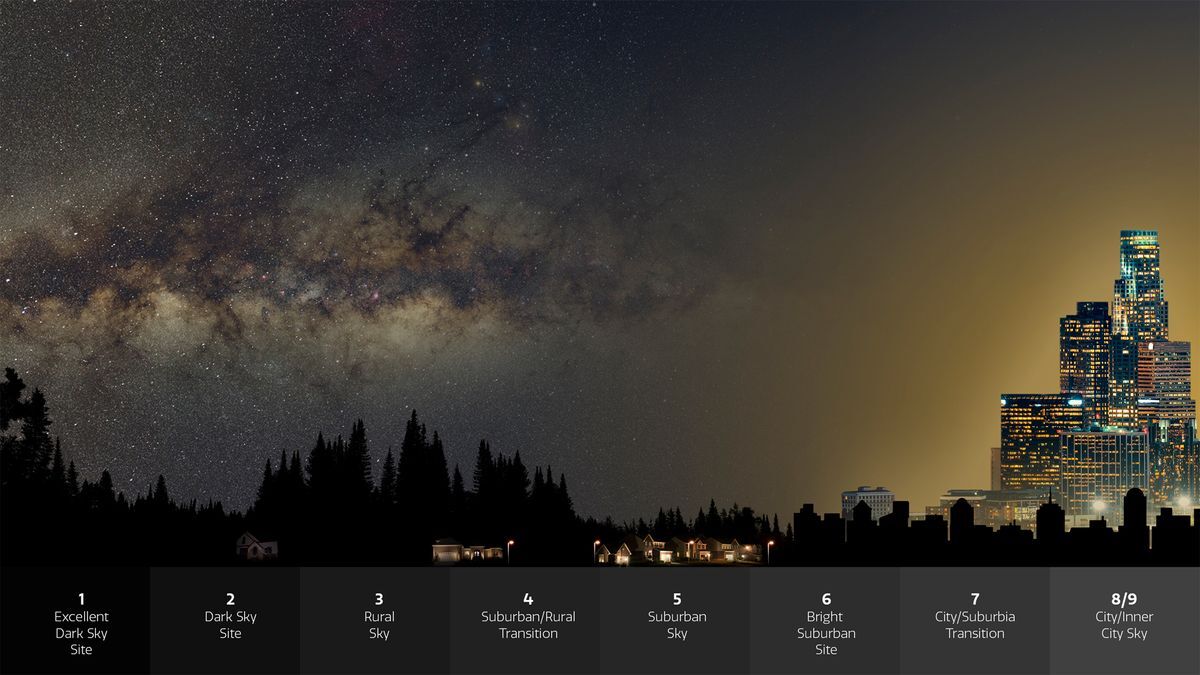Given the harmful effects of light pollution, a pair of astronomers has coined a new term to help focus efforts to combat it. Their term, as reported in a brief paper in the preprint database arXiv and a letter to the journal Science, is “noctalgia.” In general, it means “sky grief,” and it captures the collective pain we are experiencing as we continue to lose access to the night sky.



The Milky Way may be closer than you think. I had never really seen it until a few years ago. I was in my usual darker spot and took a picture of it with my phone’s astro mode. I looked back up and suddenly, there it was. I just never knew what to look for or, more importantly, just how big the visible structure was.
I recommend taking a look at lightpollutionmap.info and seeing what’s around you. I’m in a major city metro but dark-enough skies are less than 2 hours away. The Milky way revelation was in a “Bortle 5” zone (red on the map). Cities are class 8+, oceans/uninhabited is class 1. Constellations help you find the core (namely the tea pot/milk dipper asterism) and knowing what time of year/night to look is important. August is the usual ~10pm month but you can go out later at night earlier in the year and vice versa from about April (close to sunrise) to October (near sunset).
Be aware you need to adapt your eyes. Pupils dilate in seconds but the 20 minute thing comes from replenishing rhodopsin in your eyes. White/blue/purple light bleaches that compound but red doesn’t. With enough commitment and knowledge at that same place, Andromeda becomes a naked eye object for me. Extremely faint and just a smudge, but unmistakable.
I live in that gigantic red and purple blob in Northern Europe and I’m lucky if I can see 3 stars in the sky at night.
I’ve never ever seen a totally star-filled sky and it’s something I’m very sad about. One day I’ll head out to somewhere like the Australian Outback and just gaze up in awe.
The irony is that most of us live in a red/purple blob. A light pollution map pretty accurately matches population heat maps. The only outlier tends to be some resource mines, especially petroleum/gas fields with constant waste fires
Come to the UK. We’ve got official Dark Skies status in Bannau Brecheiniog (formerly the Brecon Beacons). Probably a lot easier for you to get to :)
I live in Italy. The map doesn’t show a single spot below yellow in my entire country.
I’ve never seen a clear sky in my life.
As someone living in a purple/white zone, the red zone really is magnificent by comparison. It’s clear enough when avoiding street lights that when I step out of the car, despite the dash and headlights affecting my adaptation, I immediately see the Milky way. Yellow is a step clearer, so don’t be discouraged
Wow! I’m closer than I thought! Thanks so much. This may change where I camp this weekend.
Sounds like you might have some binoculars. 7x35 or 8x42 or 10x50 binos are great for scanning the night sky. Outer lens diameter divided by zoom = inner lens diameter which you want to be 5mm or greater. 35/7=5 and 42/8=5.2 etc. Some larger “deep sky objects” such as Andromeda galaxy, Lagoon Nebula, Orion Nebula, and Hercules cluster pop right out in my nikon ae 10x50s. Again, they’re just smudges, but they’re such stationary smudges you’ll swear the sky is a painted dome.
Neat map, thanks. I’m not terribly far away from clearer night skies, but I’m down in the red-purple and not particularly mobile.
Yeah, I just saw the Andromeda galaxy for the first time in Saturday night. Naked eye viewing, but had to use my sky map app to locate it. Holy shit! Was amazing. Luckily we brought binoculars so I could really see it.
As far as unaided viewing goes, it doesn’t get any more other-worldly than that!